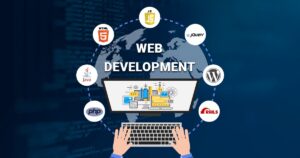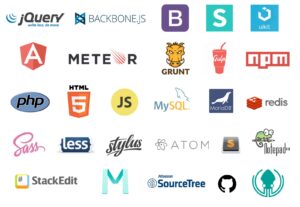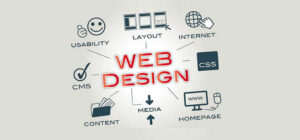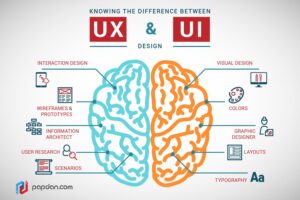Web development
Web development is the building and maintenance of websites; it’s the work that happens behind the scenes to make a website look great, work fast and perform well with a seamless user experience.
Web developers, or ‘devs’, do this by using a variety of coding languages. The languages they use depends on the types of tasks they are preforming and the platforms on which they are working.
Web development skills are in high demand worldwide and well paid too – making development a great career option. It is one of the easiest accessible higher paid fields as you do not need a traditional university degree to become qualified.
Definition
Web development is the coding or programming that enable websites functionality, per the owner requirements. It mainly deals with the non- design aspect of building websites, which includes coding and writing markup.
Frontend Web development tools
Front-end web development is the practice of converting data to a graphical interface, through the use of HTML, CSS, and JavaScript, so that users can view and interact with that data.
The challenge associated with front end development is that the tools and techniques used to create the front end of a website change constantly and so the developer needs to constantly be aware of how the field is developing.
The objective of designing a site is to ensure that when the users open up the site they see the information in a format that is easy to read and relevant
Domain Name
A domain name is your website name. A domain name is the address where Internet users can access your website. A domain name is used for finding and identifying computers on the Internet. Computers use IP addresses, which are a series of number.
A domain name can be any combination of letters and numbers, and it can be used in combination of the various domain name extensions, such as .com, .net and more.
The domain name must be registered before you can use it. Every domain name is unique. No two websites can have the same domain name.
Web hosting
Web hosting is an online service that enables you to publish your website or web application on the Internet. When you sign up for a web hosting service, you basically rent some space on a physical server where you can store all the files and data necessary for your website to work properly.
How does web hosting work
Web hosts are companies that rent out their services and technologies to host websites on the internet. Once the hosting company hosts your website, users can access it by typing in your web address (domain name) in their web browser. When they do this, their computer connects to the server your website is hosted on. The server in turn serves (sends the files you have stored on the storage to display) the website to your web visitor in their web browser.
Web design
Web design encompasses many different skills and disciplines in the production and maintenance of websites. The different areas of web design include web graphic design; interface design; authoring, including standardised code and proprietary software; user experience design; and search engine optimization. Often many individuals will work in teams covering different aspects of the design process, although some designers will cover them all The term “web design” is normally used to describe the design process relating to the front-end (client side) design of a website including writing markup . Web design partially overlaps web engineering in the broader scope of web development.
Web design process
- We begin with a discovery phase where we define the project, do a competitive analysis, and write up or refine a formal requirements document.
- We then move to structure where we’ll create a site map, wireframes, and perhaps start on a content analysis.
- Then we begin to design which often start with mood boards; then we go through rounds of design (essentially painting a picture of the website in Photoshop or Sketch); and at some point we get an an “Approved website design.”
- Next is development where we hand-off the design to a developer who builds the website.
- Then, of course, some testing happens and the site launches
UI vs UX
What is UI Design?
The “UI” in UI design stands for “user interface.” The user interface is the graphical layout of an application. It consists of the buttons users click on, the text they read, the images, sliders, text entry fields, and all the rest of the items the user interacts with. This includes screen layout, transitions, interface animations and every single micro-interaction. Any sort of visual element, interaction, or animation must all be designed.
UI designers are graphic designers. They’re concerned with aesthetics. It’s up to them to make sure the application’s interface is attractive, visually-stimulating and themed appropriately to match the purpose and/or personality of the app.
What is UX Design?
“UX” stands for “user experience.” A user’s experience of the app is determined by how they interact with it. Is the experience smooth and intuitive or clunky and confusing? Does navigating the app feel logical or does it feel arbitrary? Does interacting with the app give people the sense that they’re efficiently accomplishing the tasks they set out to achieve or does it feel like a struggle? User experience is determined by how easy or difficult it is to interact with the user interface elements that the UI designers have created.
UX design refers to user experience design, and UI design refers to the user interface design. They have a close relationship in product design but serve different roles.
In terms of functionality, UI is how things look, UX is how things work. UX is a process, while UI is a deliverable. But people easily confuse the two since they tend to have a symbiotic relationship.
“User Experience (UX) and User Interface (UI) are some of the most confused and misused terms in our field. A UI without UX is like a painter slapping paint onto canvas without thought; while UX without UI is like the frame of a sculpture with no paper match on it. A great product experience starts with UX followed by UI. Both are essential for the product’s success.”







0 Comments